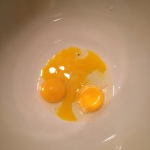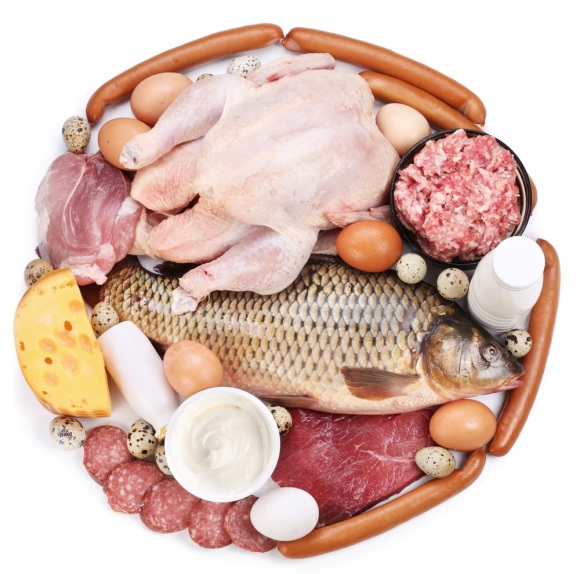
There’s a restaurant in Portland, Oregon called Le Pigeon, which makes a leek carbonara that I read about in The Globe and Mail. My lovely aunt forwarded it to me. I will link to the recipe at the end of this post if you want to try out the original.
Although I don’t eat grains anymore and rarely crave bread or pasta – my Achilles’ heel is spaghetti carbonara. There is something so comforting about creamy fettucine noodles in an egg and parmesan sauce, complemented with rendered pancetta that I just can’t get out of my head. Until now.
This recipe replaces the boring fettucine noodles with strips of leeks, cut into the width of fettucine. Since leeks are probably my favorite vegetable, I decided this was a very, very good idea.
The reason I have messed with the great recipe from Le Pigeon is just to make it a little simpler to prepare on hurried nights, and to increase the fat content (obviously!)
EASY LEEK CARBONARA
SERVES 4 – 5 AS A MAIN DISH, 6 – 8 AS A SIDE
- 3 big leeks
- 3 egg yolks
- 1 cup of parmesan
- 200g of pancetta

- Cut up 200g of pancetta into small cubes. Cook these slowly in a heavy pot to render out the fat. I always cook for about 15 minutes while I’m getting the other ingredients ready.
- Boil a big pot of water.
- Trim off the hairy bottom and dark green tops from your leeks. Cut them lengthwise into long strips that resemble fettucine noodles. Rinse these well in a deep bowl of water or the sink to get off any dirt and grit.
- Grate about a cup of parmesan cheese.
- Crack 3 egg yolks into a large bowl. Add the parmesan cheese and mix together with a fork. Set aside.
- Once the water boils, add your leek “noodles” to the pot and boil for about a minute. “Parboil” if you will.

- Finish rendering the pancetta, being careful not to overcook or your cubes will be crunchy rockettes. Most recipes will drain off the fat at this point, but not me! I spent good money on fancy pancetta from the Healthy Butcher and I’m not throwing any of it away.
- Strain the leeks after a minute. At Le Pigeon they are all fancy and plunge the leek “noodles” into an ice bath. I wouldn’t bother, though it is nice to dry them a bit on a towel, and then add the dry “noodles” to the finished pancetta and hot fat. Toss like crazy in the warm, heavy pan.
- Once all the “noodles” have been coated with pancetta fat and the pancetta is evenly distributed, and the leeks have cooked a little more to their desired softness, quickly use some tongs to dump the entire pan into the prepared bowl of yolks and parmesan. Stir quickly so that the sudden heat doesn’t make the yolks “cook”. (They will “temper” with the heat, but not actually cook).

- Serve out smaller portions than you think you can eat, and top with some extra parmesan and fresh ground pepper.
If you think regular carbonara is heavy, this is about twice as heavy. But what I mean instead of “heavy” is filling. What is so remarkable is that even after a large portion, there is no bloating or heaviness – just fullness. I swear you cannot overeat this because it’s just so rich. And absolutely delicious!
If you are not a fan of leeks, I still think you should try this. Boiling the leeks for a minute before the sauté seems to soften their flavor quite a bit. And yet that subtle leek-ness is still there, making this carbonara dish so much more layered and intense than the standard fare. 
MACRONUTRIENT BREAKDOWN
One cup of standard carbonara (and who only eats one cup of pasta at a sitting?) is 43g of carbohydrates. One cup of this Easy Leek Carbonara (and you probably can’t eat a full cup) is 7g of carbohydrates. This recipe also contains 19g of protein and about 32g of fat per serving/cup. If you want less protein, use less pancetta.
As it is, this recipe has 74% of calories from fat, 20% from protein and 6% from carbohydrates. Very LCHF.
What else? Each serving has 25% of your RDA for Calcium, 10% of your Iron, 27% of your Vitamin B12, 28% of your Phosphorous, plus a decent amount of Selenium, Riboflavin, Folate, Potassium, Vitamin A and Vitamin B6.
HOW TO PORTION THIS RECIPE
If you are alone and want to make this for yourself, just use one leek and one egg yolk, with a smaller amount of parmesan and pancetta. You will have leftovers. Generally, a big leek cooked this way will be too much for one person or just enough for two sides – so gage the recipe that way.
FURTHER READING
Original and slightly more exciting recipe from Le Pigeon restaurant (includes lemon juice! red pepper flakes!)
Read about why leeks are so awesome and also support cardiovascular health. Try to eat something from the allium family every day (garlic, onions, leeks, scallions, etc).
A reminder about just what LCHF stands for (low carbohydrate high fat) and why it matters



 For a pancake treat, this is pretty good.
For a pancake treat, this is pretty good.